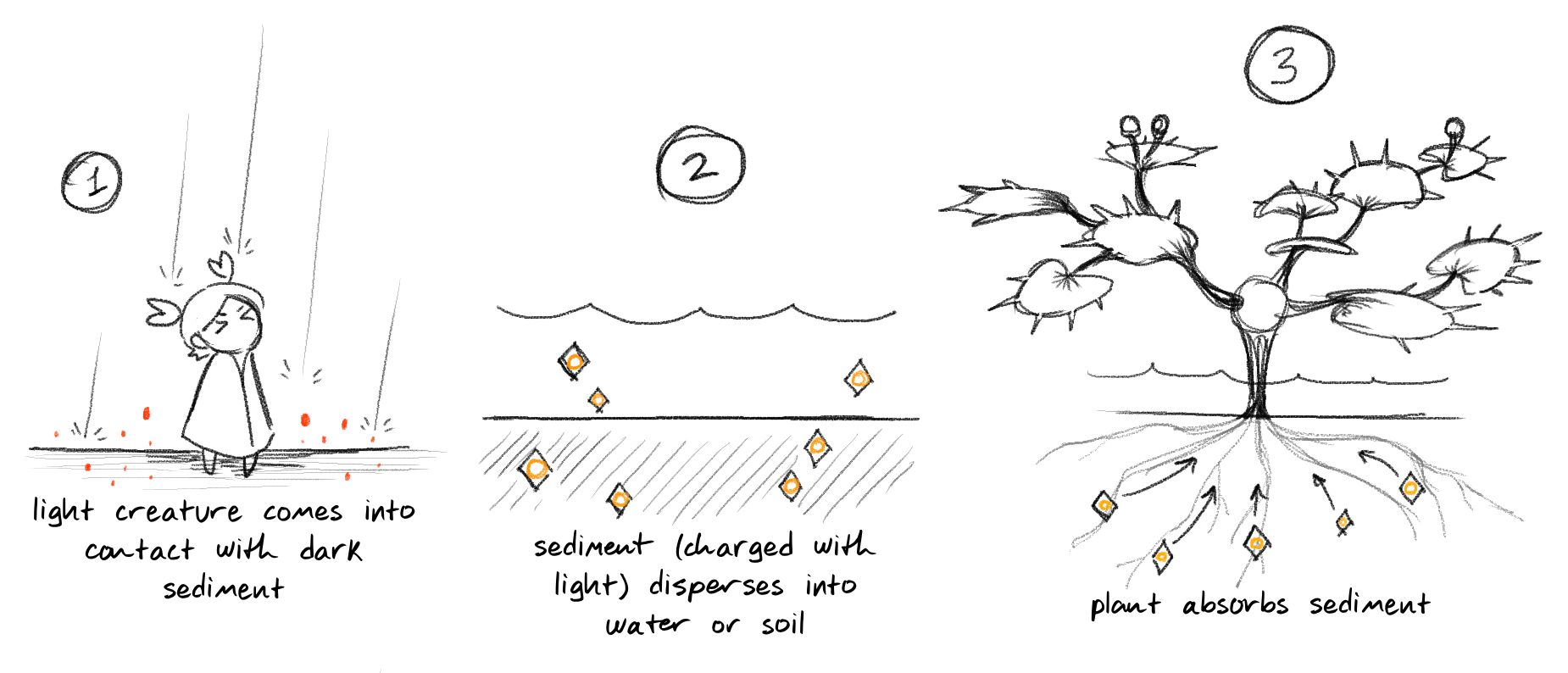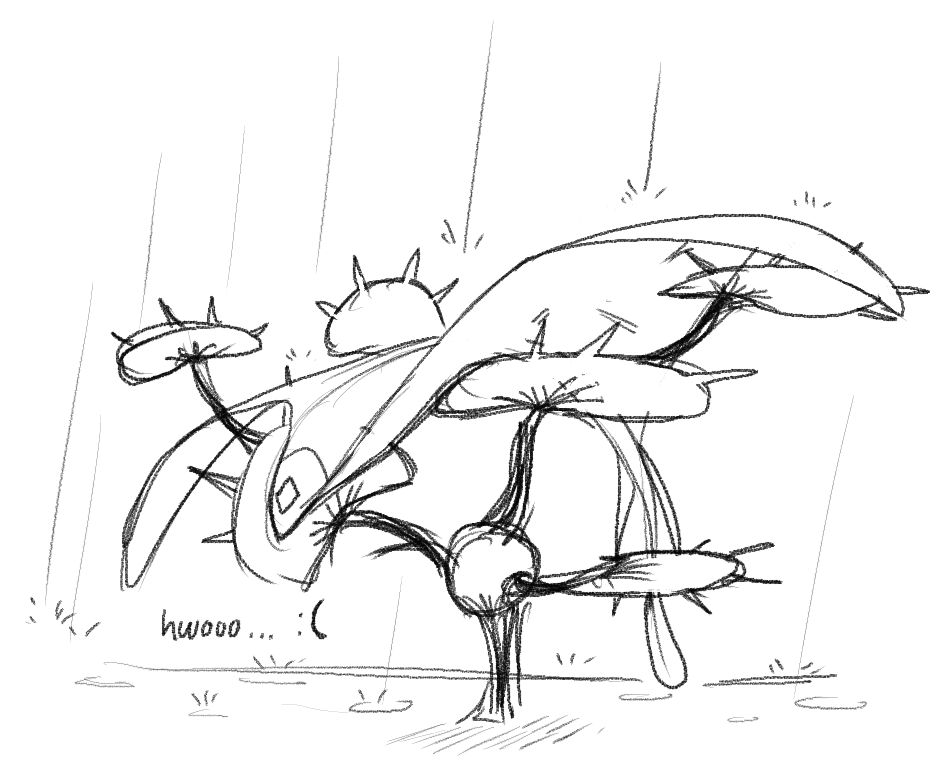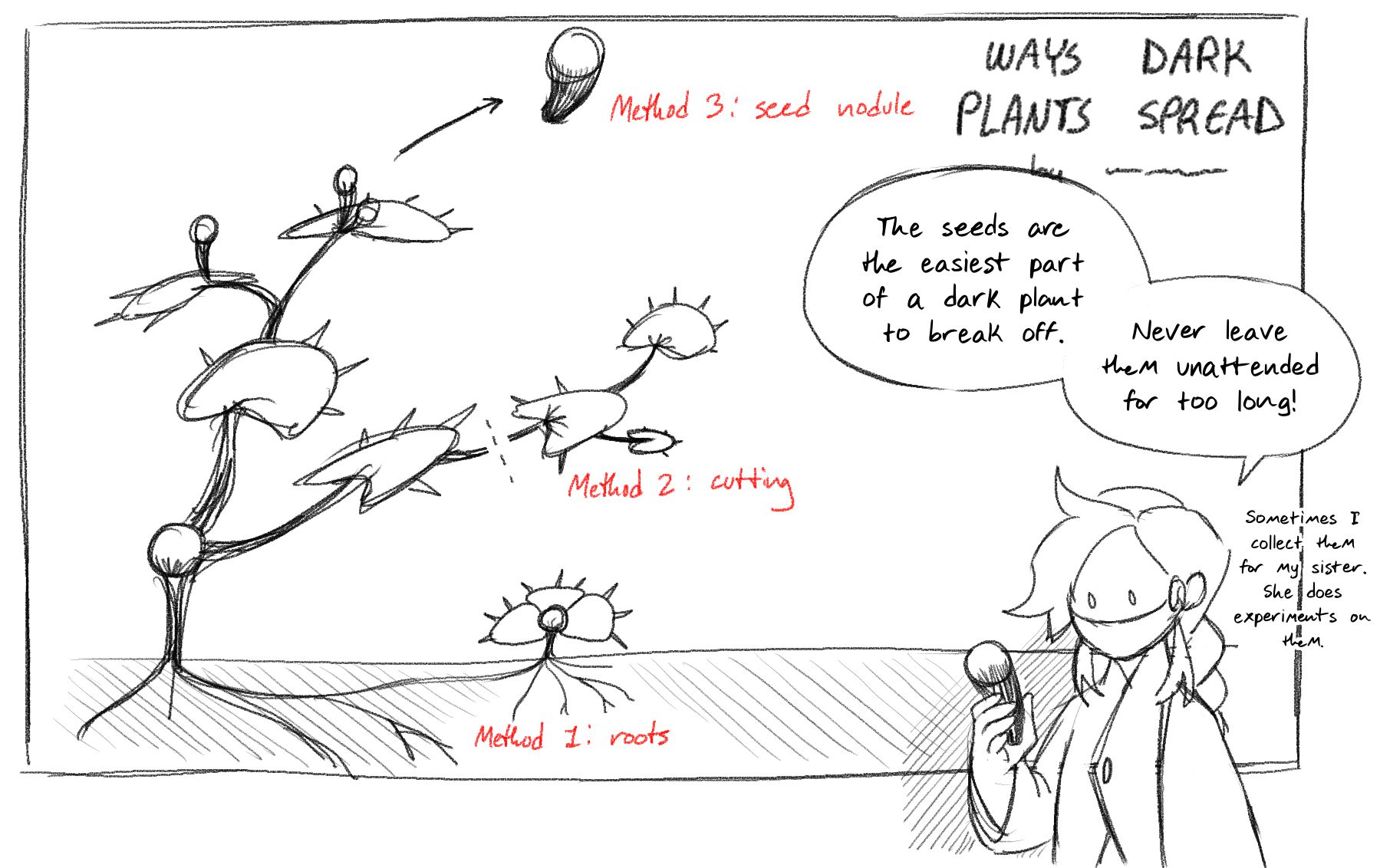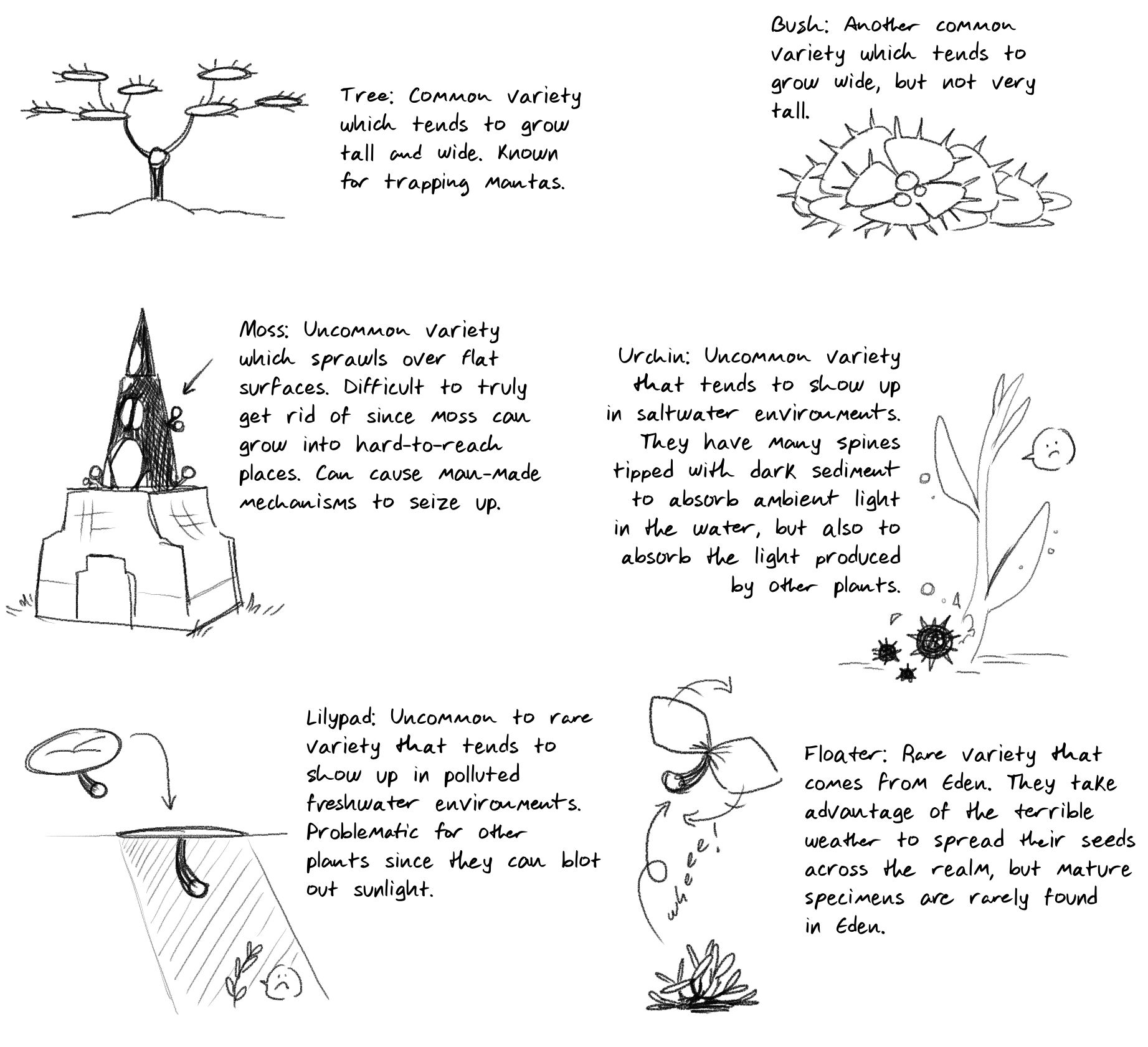The nature of dark plants
Dark plants are a relatively new addition to the Kingdom of Sky, appearing some decades after the disaster at Eden. Like other plants, dark plants need light to grow. However, their leaves are too dark and thick to perform photosynthesis, and too much light delivered directly can cause the plants to burn and shrivel. Instead, dark plants absorb the light captured by dark water — water which has been contaminated by dark sediment, the byproduct of darkstone production.

ID: A diagram showing the flow of light from creature to dark plant. When creatures of light come into contact with dark sediment, the sediment drains their light. The sediment, now charged with light, is dispersed through the water and soil, which is then absorbed by dark plants.

ID: A drawing of a manta caught in the brambles of a dark plant. It is raining.
In most cases, dark plants pose no direct harm to beings of light. In areas like the Hidden Forest, where dark rain commonly pours, dark plants take on indirect predatory behaviors. Especially in wet environments, dark plants will produce a sticky dew from their leaves that tends to attract butterflies. This dew contains trace amount of dark sediment which dulls one's senses when consumed. This leads to butterflies resting in the rain for longer than they usually would, leading to death in some cases. Dark plants have also been seen ensnaring mantas. This happens when mantas, exhausted by the dark rain or other factors, fly into the brambles of a dark plant, holding them in place as the dark rain saps their light.
Fully getting rid of a dark plant can be difficult. They can be burned down using fire or a candle spell, but even if all the stems and leaves are burned, the plant will begin to regrow some time later. To truly destroy a dark plant, it needs to be uprooted, and the roots burned with the rest of the plant. Dark plants can also spread fairly easily, as they can reproduce asexually.

ID: A diagram showing the 3 ways dark plants can spread -- via their roots, via cuttings, and via seed nodules. Mufotsuki is standing in front of the diagram, holding a seed nodule. She states: "The seeds are the easiest part of a dark plant to break off. Never leave them unattended for too long! Sometimes I collect them for my sister. She does experiments on them."
Despite their mutual association with darkness, not many, if any, dark plants grow in Eden itself. Although Eden is abundant in dark sediment, the weather conditions are too violent and destoys most varieties before they can properly root.
Speaking of dark plant varities...
Tree: Common variety which tends to grow tall and wide. Known for trapping mantas.
Bush: Another common variety of dark plant which tends to grow wide, but not very tall.
Moss: Uncommon variety which sprawls over flat surfaces. Difficult to truly get rid of since moss can grow into hard-to-reach places. Can cause man-made mechanisms to seize up.
Urchin: Uncommon variety that tends to show up in saltwater environments. They have many spines tipped with dark sediment to absorb ambient light in the water, but also to absorb the light produced by other plants.
Lilypad: Uncommon to rare variety that tends to show up in polluted freshwater environments. Problematic for other plants since they can blot out sunlight.
Floater: Rare variety of plant that comes from Eden. They take advantage of the terrible weather to spread their seeds across the realm, but mature specimens are rarely found in Eden.

ID: Various drawings depicting each of the dark plant varieties, one for each.